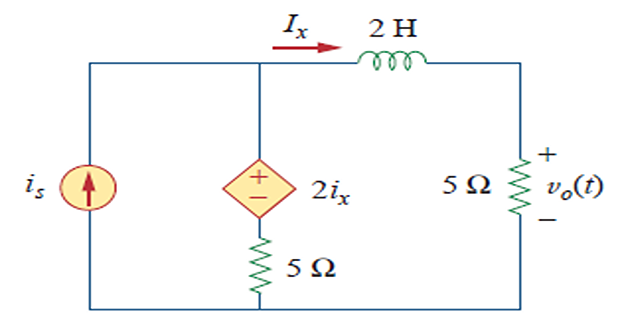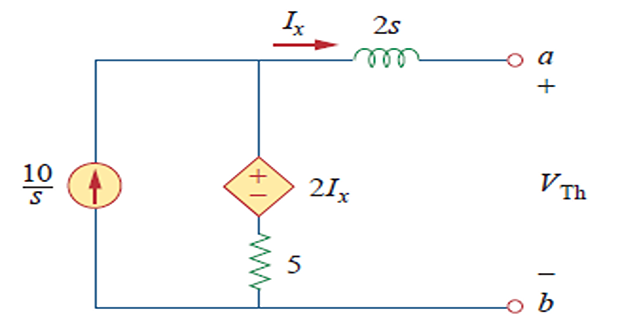Demonstrative Video
Introduction
Laplace transform is the most powerful mathematical tools for circuit analysis, synthesis, and design.
A System is a mathematical model of a physical process relating the input to the output
Circuits are nothing more than a class of electrical systems
LT has two characteristics making it attractive tool in circuit analysis
Transform a set of linear constant-coefficient DEs into a set of linear polynomial eqs., which are easier to manipulate.
Automatically introduces the initial values of the current and voltage into the polynomial eqs. Thus, initial conditions are an inherent part of the transform process.
Circuit analysis with Laplace transforms
Transform the circuit from the time domain to the s-domain.
Solve the circuit using any circuit analysis technique
Take the inverse transform of the solution to convert in the time domain.
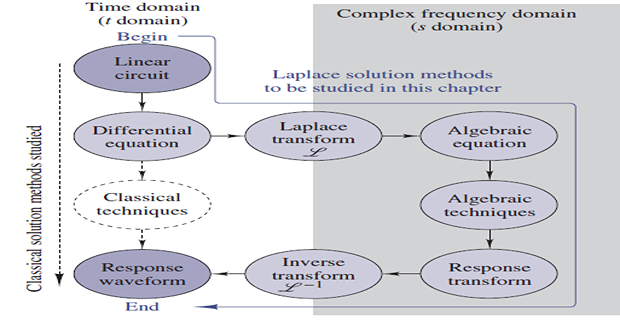
Circuit Element Models
- \[\begin{aligned} v(t) & = Ri(t) \\ V(s) & = RI(s) \end{aligned}\]Resistor
Inductor
\[\begin{aligned} v(t) & = L \dfrac{di(t)}{dt} \\ V(s) & = L[sI(s)-i(0^-)] = sLI(s)-Li(0^-)\\ I(s) & = \dfrac{1}{sL}V(s)+\dfrac{i(0^-)}{s} \end{aligned}\]
Capacitor
\[\begin{aligned} i(t) & = C\dfrac{dv(t)}{dt} \\ I(s) & = C[sV(s)-v(0^-)] = sCV(s)-Cv(0^-)\\ V(s) & = \dfrac{1}{sC}I(s)+\dfrac{v(0^-)}{s} \end{aligned}\]
Assuming zero initial condition for L and C
LT in circuit analysis facilitates the use of various signal sources such as impulse, step, ramp, exponential, and sinusoidal.
Problem
Find \(v_0(t)\) assuming zero initial conditions.
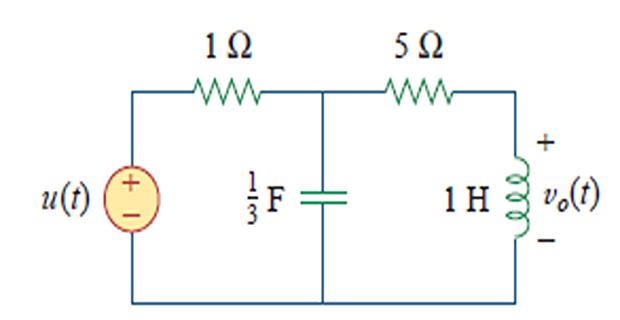
Problem
Find \(v_0(t)\) assuming \(v_0(0)=5\) V
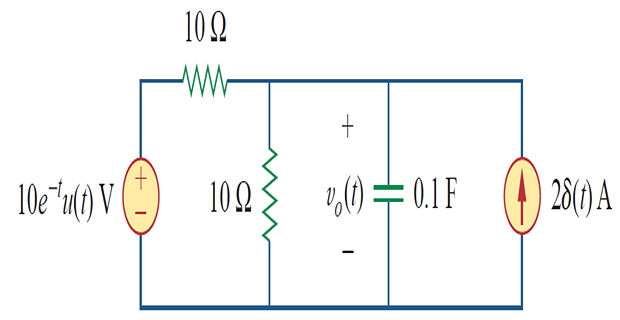
Problem
- \[\begin{aligned} v_s(t)&=10u(t) ~\mathrm{V}\\ i_L(0)&=-1~\mathrm{A} \\ v_c(0)&=5 ~\mathrm{V} \end{aligned}\]assuming Find
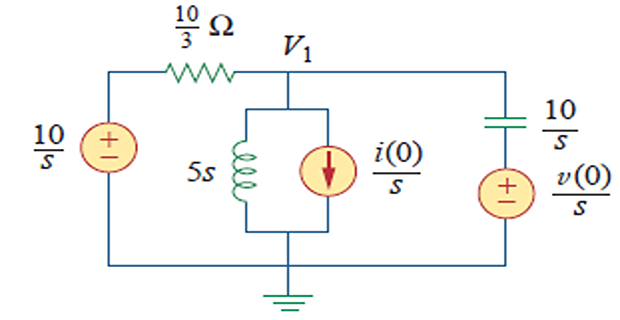
Problem
Find \(V_0(s)\) using Thevenin’s theorem assuming no intial energy stored at \(t=0\) and \(i_s=10u(t)\) A.
